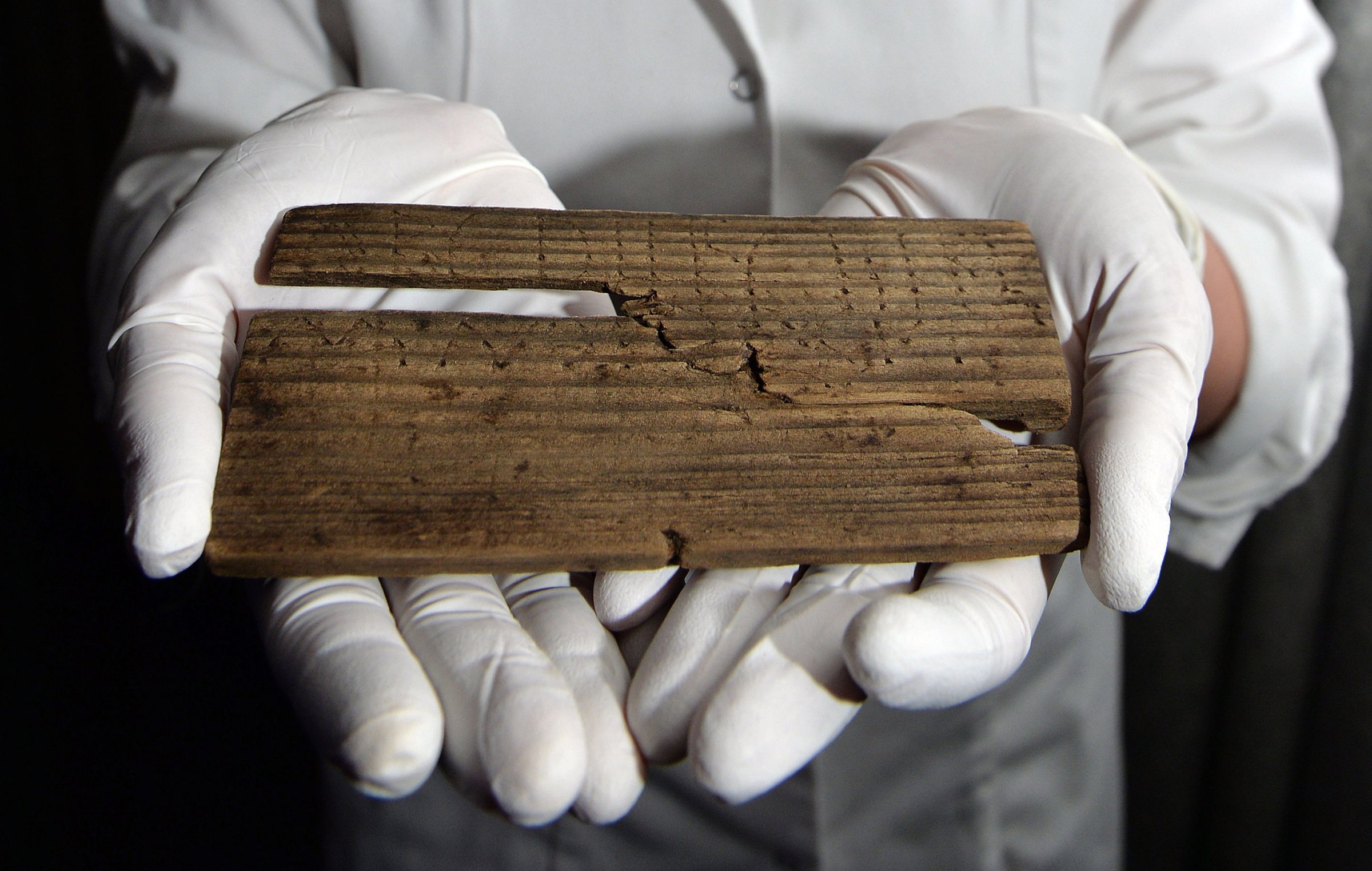
Archaeologists have found London’s earliest handwritten document — an ancient IOU — among waxed writing tablets buried for almost two millennia under the city’s financial center.
The Museum of London Archaeology on Wednesday published the findings of research into the cursive scratchings on wooden blocks dating from the 1st century that were discovered during excavations for the new European headquarters of Bloomberg in the City of London.
The blocks would have been covered in beeswax and used to write messages. While the wax is long gone, carvings from the early days of the Roman settlement known as Londinium remain in the wood, preserved in the mud of the now subterranean river Walbrook.
The museum says its experts have so far deciphered the meanings of 80 of the 405 blocks unearthed at the site.
“In the words of the people who lived, worked, traded with and administered Roman London, the Bloomberg tablets reveal the names, events, workings and organization of the new city,” a press release says. One tablet features the earliest ever reference to London by 50 years: “Londinio Mogontio,” it reads, or “In London, to Mogontius,” Agence France-Presse reports.
Also among the tablets is a message believed to be the oldest example of writing ever discovered in the city, dating from Jan. 8, in the year 57. It is a note from one freed slave to another that acknowledges a debt of 105 denarii, around half a Roman soldier’s annual salary.
More Must-Reads from TIME
- Donald Trump Is TIME's 2024 Person of the Year
- Why We Chose Trump as Person of the Year
- Is Intermittent Fasting Good or Bad for You?
- The 100 Must-Read Books of 2024
- The 20 Best Christmas TV Episodes
- Column: If Optimism Feels Ridiculous Now, Try Hope
- The Future of Climate Action Is Trade Policy
- Merle Bombardieri Is Helping People Make the Baby Decision
Write to Simon Lewis at simon_daniel.lewis@timeasia.com